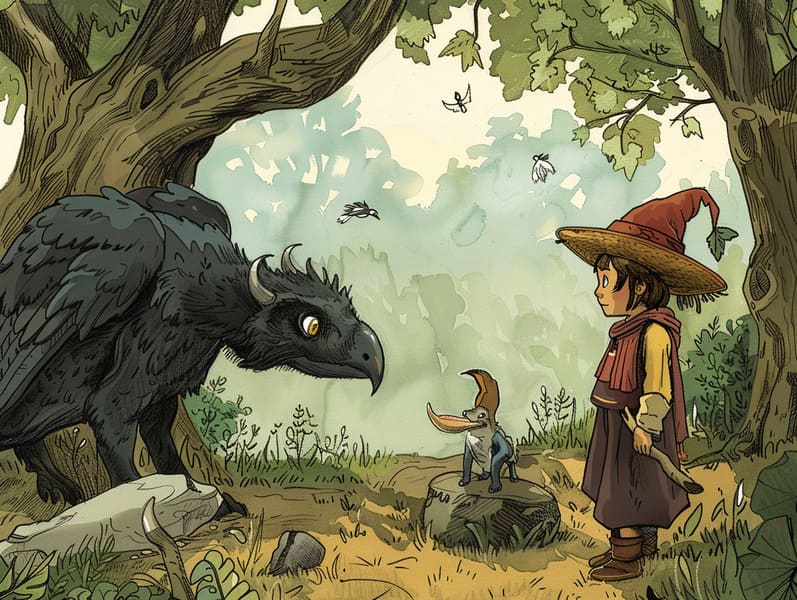Exploring the Roots of Ancient Fairy Tales with Their Undying Splendor.
Exploring the Roots of Ancient Fairy Tales with Their Undying Splendor.
Blog Article

Short fairy tales have ancient roots. These narratives have been conveyed from one generation to the next ages before they were ever transcribed. They were born from a variety of backgrounds, including Asian traditions. They were initially passed along among mature audiences, often carrying themes and messages mirroring the societal norms and beliefs of the time.
The famous Grimm duo, Jacob and Wilhelm, were among the first to assemble many of these beloved narratives. Their published works, "Grimm's Fairy Tales," included stories like "Cinderella," "Hansel and Grethel," and "Little Snow White," which have since become essentials in the world of timeless fairy tales. Similarly, the Danish author's whimsical fairy tales, such as "The Little Mermaid," and "The Little Duckling," have stolen hearts worldwide, solidifying their place in the pantheon of iconic fairy tales.
Despite their historical roots, traditional fairy tales remain as important as ever, especially as nighttime stories for kids. These delightful tales are now available in different formats, including vibrantly illustrated books, fantastical animations, and online storybooks.
Their ongoing significance can be credited to several whimsical characteristics:
Vital Lessons: Classic fairy tales often impart important moral lessons. Fairy tales like "The Tale of the Boy Who Cried Wolf" teach the significance of integrity, while "The Race of the Tortoise and the Hare" underline the traits of perseverance and meekness. These tales offer young ones clear distinctions between truth and falsehood, developing their moral compass in a mild yet meaningful way.
Sympathy and Perception: Fairy tales frequently involve heroes facing trials and tribulations, inciting young listeners to empathize with their struggles and champion their triumphs. For instance, "The Tale of Beauty and the Beast" points out the virtue of looking beyond appearances to perceive the true character of a character, fostering tenderness and insight.
Cultural Insights: Many timeless fairy tales are infused with the cultural contexts from which they arose. Understanding these stories can provide fascinating glimpses into different cultures, cultivating a sense of world awareness and appreciation.
Inventiveness and Imagination: The magical elements in classic fairy tales—mythical entities—stimulate children’s visions and dreams. These stories guide readers to otherworldly realms, enlivening imaginative ideas and a sense of curiosity that lasts a lifetime.
Ancient fairy tales are not only bewitching but also educational. They act as entrancing tools in strengthening various brain and heart skills in young readers. When ancient fairy tales are spoken out loud, they promote verbal development by offering new vocabulary and complicated sentence structures. This practice also strengthens auditory perception and attention, as children hang on every word, looking forward to see what happens next.
Furthermore, discussing the themes and characters of timeless fairy tales can enhance evaluative skills and thought processes. Children learn to notice patterns, expect results, and realize cause and effect. These explorations also boost children say their thoughts and feelings, nurturing their emotional intelligence.
In today’s technological age, the prevalence of online storybooks has made these stories more attainable than ever. Websites and web apps feature extensive collections of old fairy tales that can be enjoyed or listened on anytime, anywhere. Fairy tales recited are particularly widespread, making available an interactive way for young ones to appreciate these mesmerizing stories. Audiobooks and voiced videos lead characters and settings to life, often enhanced by fantastical sound effects and background music that elevate the story journey.
The lasting appeal of ancient fairy tales lies in their ability to shift to current eras while holding onto their essential themes. Contemporary reimaginings of these tales often show more diverse figures and modern settings, making them pertinent to today’s audience. However, the fundamental themes of courage, kindness, and impartiality remain unchanged, continuing to affect children of all ages.
Traditional fairy tales also offer a sense of security and understanding. They extend a structured narrative with a recognizable beginning, middle, and end, often ending with the termination of conflicts and the triumph of honesty over deceit. This foreseeability can be heartening for kids, yielding a sense of constancy in an shifting world.
Old fairy tales continue to fascinate and edify new generations, maintaining their loveliness and relevance in modern society. As children's bedtime stories, they deliver up a perfect blend of charm and understanding, nourishing moral values, empathy, and creativity. The accessibility of online fairy tales and the well-liked nature of fairy tales spoken validate that these old stories remain within reach to new generations.
By keeping and making known these stories, we continue to praise the rich tapestry of cultural heritage and cultural heritage. Whether you are experiencing a gorgeously illustrated book, discovering a cyber collection, or hearing an voice book, the spell of classic fairy tales is always within reach. These narratives highlight of the ageless effect of storytelling and its ability to check it out unite us across centuries and lands.
Even if you are experiencing a beautifully illustrated book, accessing a virtual library, or playing an narrated book, the mystique of famous fairy tales is always within reach.
These fairy tales reveal of the everlasting magic of tales and its ability to join us across time and space, making a tie that enchants and educates alike.